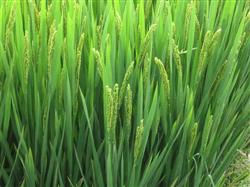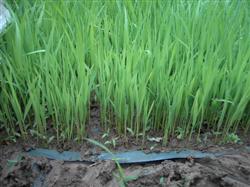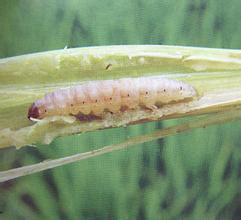What is the law of fertilizer requirement in each growth stage of rice?

Nitrogen absorption law: sleep to nitrogen nutrition is very sensitive, is the most important factor to determine the quality of rice, rice life in the body has a higher nitrogen concentration, which is required for high-yield rice nutritional physiological characteristics. There are two obvious peaks of nitrogen uptake by rice: one is at tillering stage, that is, 2 weeks after transplanting, and the other is 7~8 weeks after transplanting. If nitrogen supply is insufficient at this time, it often causes spikelet degeneration, which is not conducive to high yield. Phosphorus uptake law: rice phosphorus uptake is much lower than nitrogen, about half of the average nitrogen, but still need to absorb more phosphorus in the late growth stage. Rice needs phosphorus at all growth stages, and its absorption law is similar to that of nitrogen nutrition. The absorption peak was around 3 weeks after transplanting. At this time, the accumulation amount of total phosphorus in rice accounted for about 54% of the total phosphorus in the whole growth period, and the phosphorus pentoxide content per gram of dry matter was the highest at the peak tillering stage, about 2.4 mg. At this time, phosphorus nutrition was insufficient, which affected the accumulation of dry matter above and underground parts of rice tillering number. The phosphorus absorbed by rice at seedling stage can be transferred from senescent organs to new organs repeatedly during re-growth and over-growth. About 60%~80% of phosphorus is transferred to grains at yellow ripening, while most of phosphorus absorbed after heading remains in roots. K absorption law: K absorption is higher than N, indicating that rice needs more K, but its K absorption has been basically completed before rice heading and flowering. The potassium uptake of seedlings was not high, and the potassium content in plants between 0.5% and 1.5% did not affect normal tillering. The peak of potassium uptake was from tillering stage to jointing stage, and the potassium content in stem and leaf was above 2%. When the potassium content in stem and leaf was less than 1.2%, the number of spikelets decreased significantly. From heading stage to harvest stage, potassium in stems and leaves did not concentrate to grains like nitrogen and phosphorus, and its content was maintained between 1.2% and 2%.
- Prev

Summary on High-yield cultivation techniques of dry cultivation and late planting of Rice
The technology of dry raising rice seedlings has been introduced into Luoquan Town since 1990s. After the stage of experiment, demonstration and extension, through nearly 20 years of production practice, many successful experiences have been obtained from sowing experiments in different soils and different ways. now dry seedling raising technology is a mature new rice seedling raising technology in our town. After the reverse.
- Next

Several control measures of rice stem borer
Rice stem borer, also known as heart borer, heart borer, is one of the main pests harmful to rice, the larvae have miscellaneous feeding habits, but also harm corn, sorghum and so on. Generally, the yield can be reduced by 5-10%, and the yield can be reduced by more than 30%. It is also an urgent matter for insects to seize grain. Several prevention and control measures are introduced for reference only. 1....
Related
- The first cup of black tea in spring, the flavor and history of tea gardens in Kenya, Africa
- The computer can not only choose potatoes, but also grow tea rice. AI will grow winter oolong tea champion.
- It is not only the inflated tea bitten by insects, but also engraved with the four seasons tea in Beipu.
- The Oriental Beauty Tea Festival in Zhuxian County takes the stage at the weekend to experience the plus-size feast of oil tea.
- & quot; Oriental Beauty Tea & Exploration of Emei in Hsinchu, the hometown of quot;
- The new variety of strawberry "Tainong 1" dessert is the first choice with mellow aroma. Crimson gorgeous
- History of Tea in Taiwan: from Wild Inner Mountain to Export Tea Garden
- Two types of Taiwan Oriental Beauty Black Tea won the British three-Star Award for Childhood Tea Xiang Zhang Jiaqi changed from pilot to champion tea maker.
- Banana species and varieties: the planting history of Taiwan Xianren banana and dwarf banana is long, is banana disease resistant?
- Coffee planting Technology: Qianjie Coffee from Seedling to harvesting

